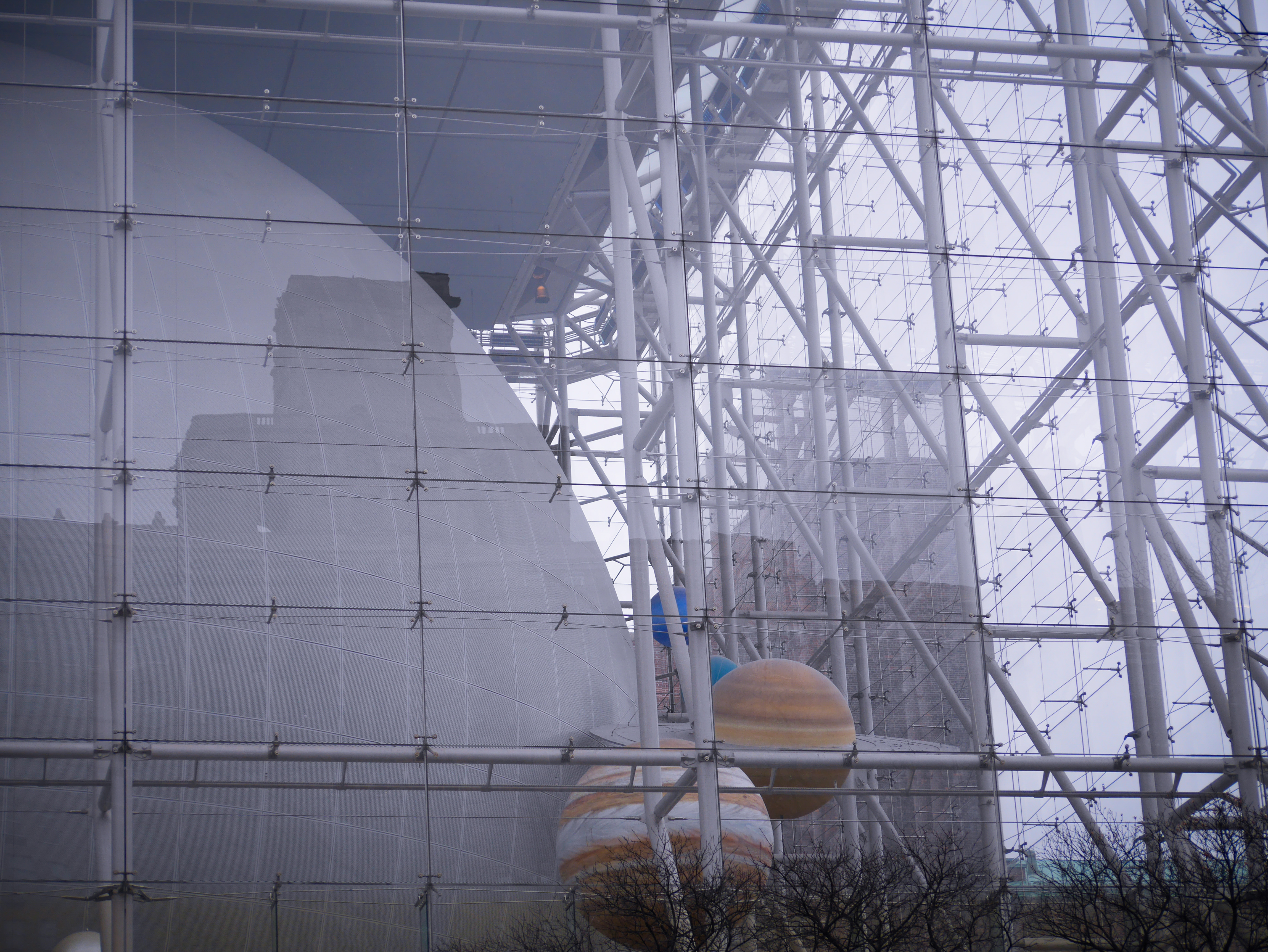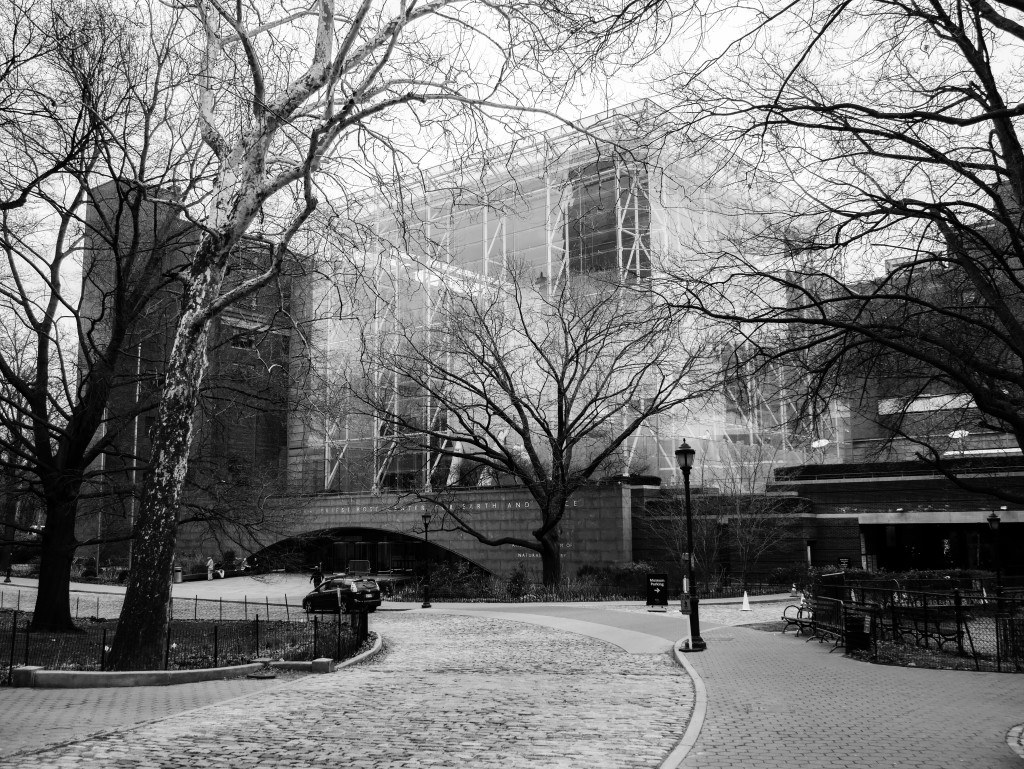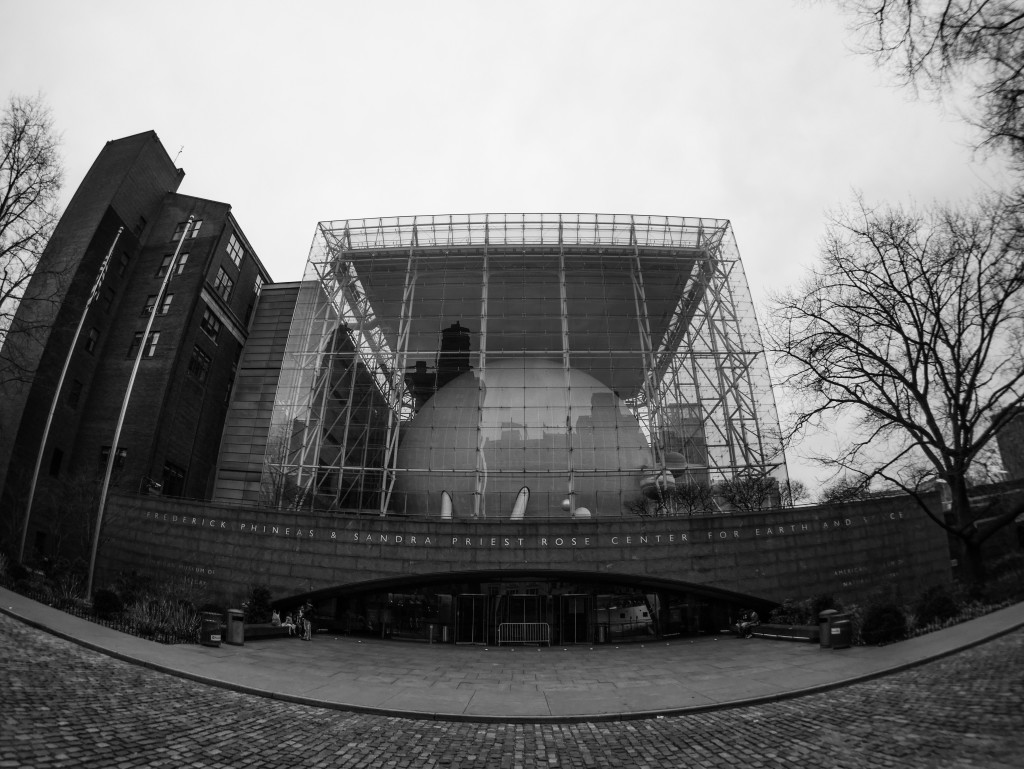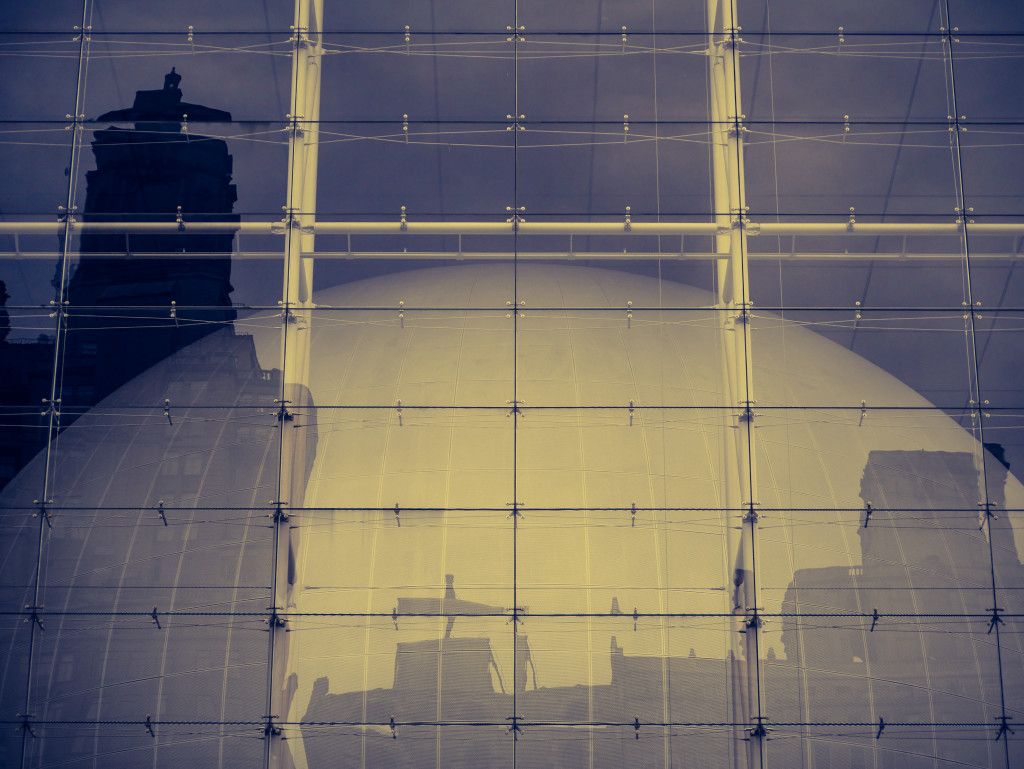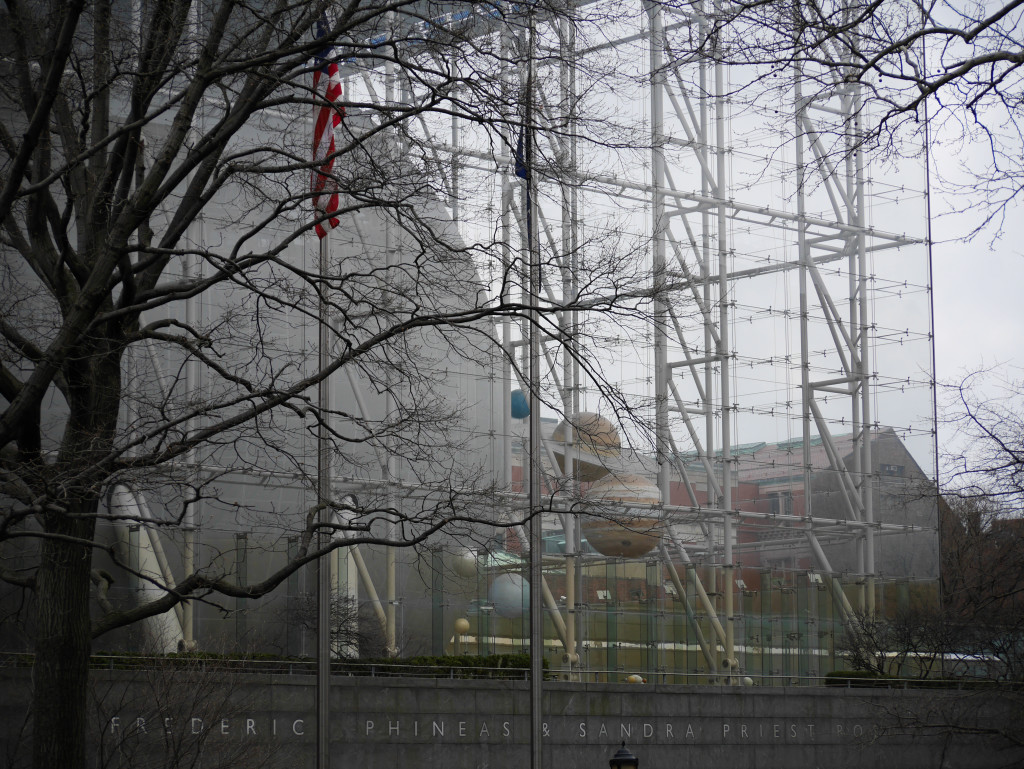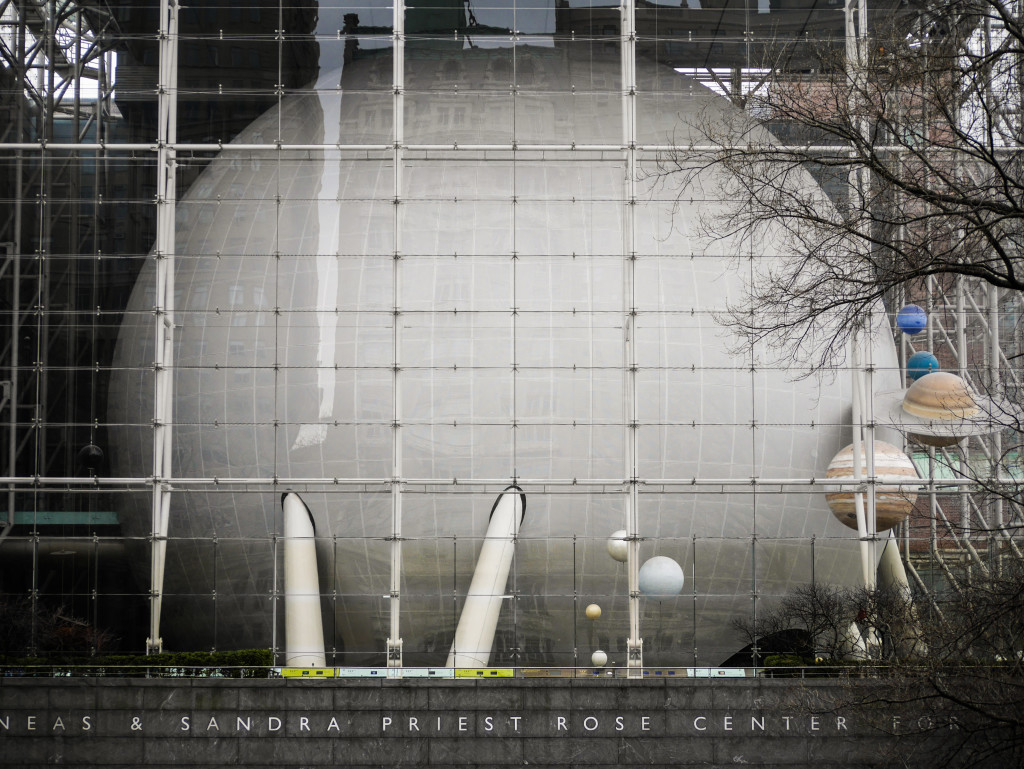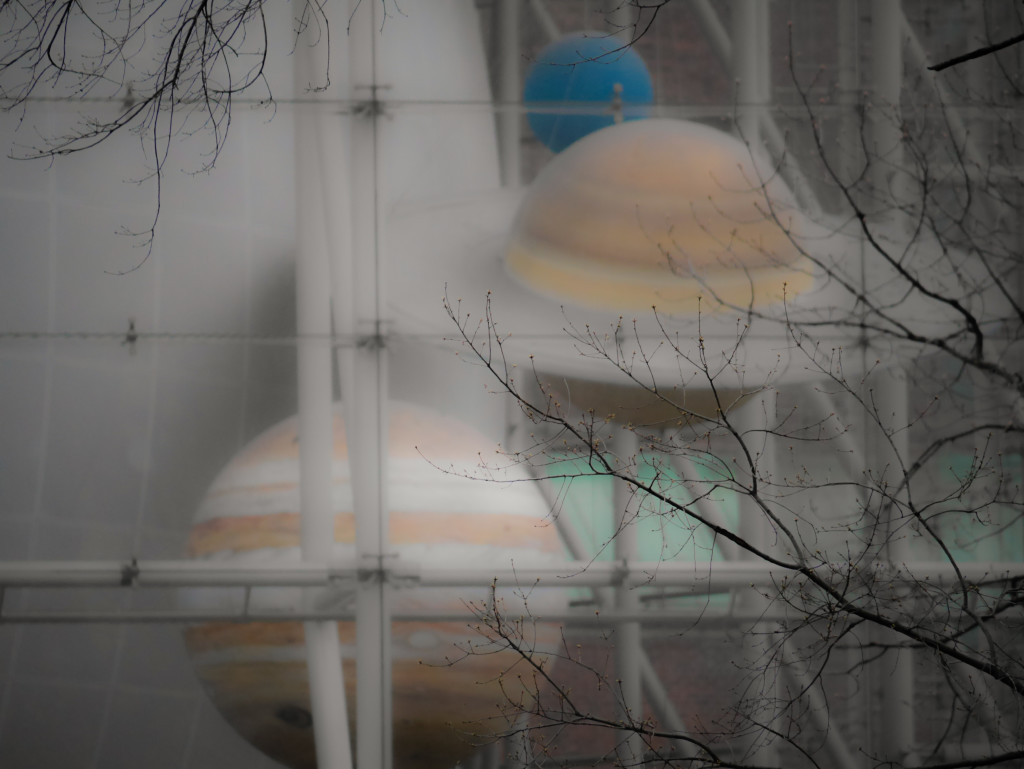The Rose Center for Earth and Space is a part of the American Museum of Natural History in New York City. The Center’s complete name is The Frederick Phineas and Sandra Priest Rose Center for Earth and Space. The main entrance is located on the northern side of the museum on 81st Street near Central Park West in Manhattan‘s Upper West Side. Completed in 2000, it comprises the new Hayden Planetarium, the original of which was opened in 1935 and closed in 1997. Neil deGrasse Tyson is its director; no other directors have been appointed.
The center is an extensive reworking of the former Hayden Planetarium, whose first projector, dedicated in 1935, had 2 successors previous to the current one.
The original Hayden Planetarium was founded in 1933 with a donation by philanthropist Charles Hayden. In 1935, the Hayden Planetarium, designed by architects Trowbridge & Livingston, opened, after its construction was funded by a $650,000 loan from the Reconstruction Finance Corporation and a $150,000 donation from banker Charles Hayden of Hayden, Stone & Co. Its mission was to give the public “a more lively and sincere appreciation of the magnitude of the universe… and for the wonderful things which are daily occurring in the universe.” Joseph M. Chamberlain, hired as an assistant curator in 1952, became Chairman of the Planetarium in 1956. In 1960, a Zeiss Mark IV projector was installed, followed by a Zeiss Mark VI projector and new seats in 1997.
In January 1997, the original Hayden Planetarium was closed and demolished. In August 1999, a new, customized Zeiss Mark IX projector was installed, accompanied by a digital dome projection system that provides a 3-D visualization of the universe based on images generated in real time by a Silicon Graphics supercomputer.
On February 19, 2000, the $210 million Frederick Phineas and Sandra Priest Rose Center for Earth and Space, containing the new Hayden Planetarium, opened to the public. The Rose Center was designed by James Polshek and Todd H. Schliemann of Polshek Partnership Architects, and the exhibition design is by Ralph Appelbaum Associates.
Designed by Polshek and Todd Schliemann, the building consists of a six-story-high glass cube enclosing the 87-foot (27 m) illuminated Hayden Sphere, which appears to float, although it is actually supported by truss work. Polshek has referred to this work as a “cosmic cathedral.”
The Rose Center and its adjacent plaza are both located on the north face of the Museum; the Center encloses 333,500 square feet (30,980 m2) of research, education, and exhibition spaces in addition to the Hayden Planetarium. Also located in the facility is the Department of Astrophysics, the newest academic research department in the Museum. Further, Polshek designed the 1,800-square-foot (170 m2) Weston Pavilion, a 43-foot (13 m) high transparent structure of “water white” glass along the Museum’s west facade. This structure, a small companion piece to the Rose Center, offers a new entryway to the Museum as well as opening further exhibition space for astronomically-related objects.
The exhibits highlight human connection to the cosmos along with the scale and properties of the observable universe itself. When the new Rose Center opened with a model of only eight planets, excluding what was then called planet Pluto, it resulted in a headline-making controversy.
The Hayden Planetarium (often called “The Hayden Sphere” or “The Great Sphere”) has, since 2000, been one of the two main attractions within the Rose Center. The top half of the Hayden Sphere houses the Star Theater, which uses high-resolution full-dome video to project “space shows” based on scientific visualization of current astrophysical data, in addition to a customized Zeiss Star Projector system replicating an accurate night sky as seen from Earth. The Star Theater is one of the world’s pre-eminent planetariums, which incorporates high-resolution full-dome video to create “space shows,” based in scientific visualization of current astrophysical data.
The bottom half of the Sphere is home to the Big Bang Theater, which depicts the birth of the universe in a four-minute program. The Big Bang Theater occupies the bottom half of the Hayden Sphere.
[excerpts from Wikipedia]
